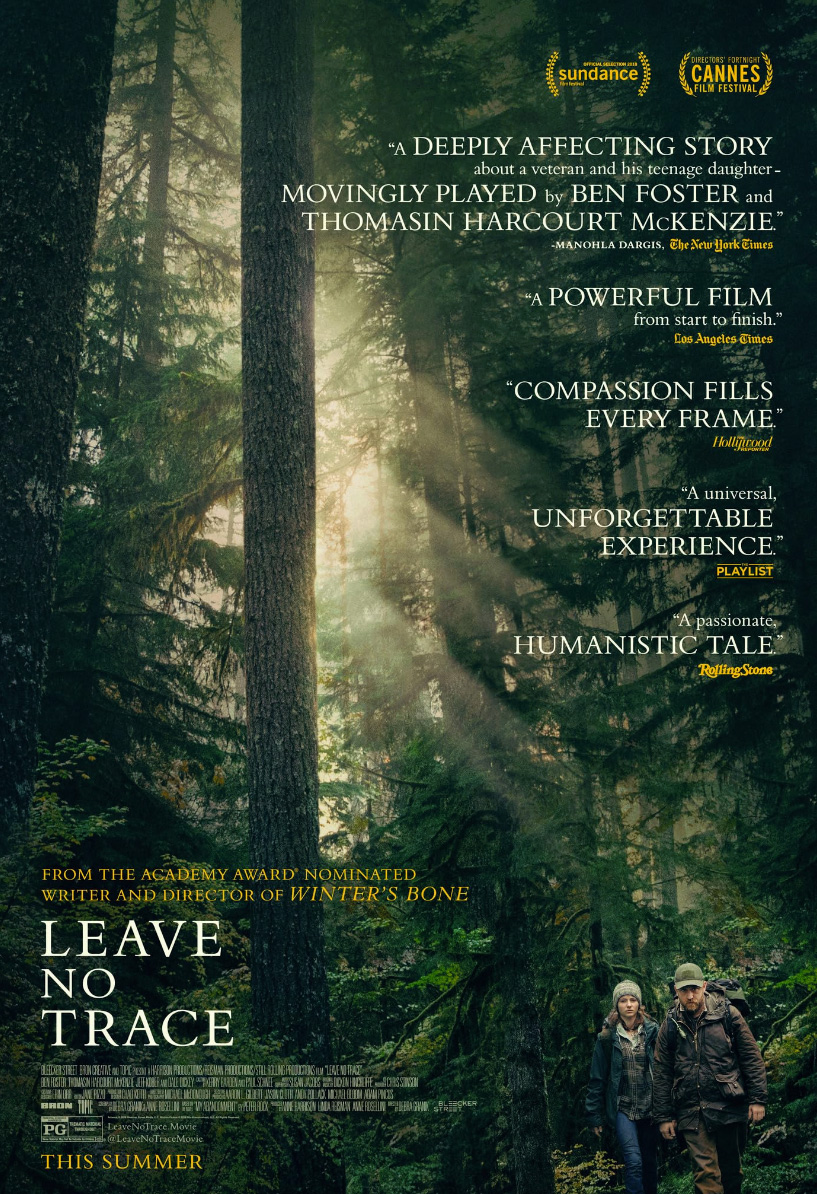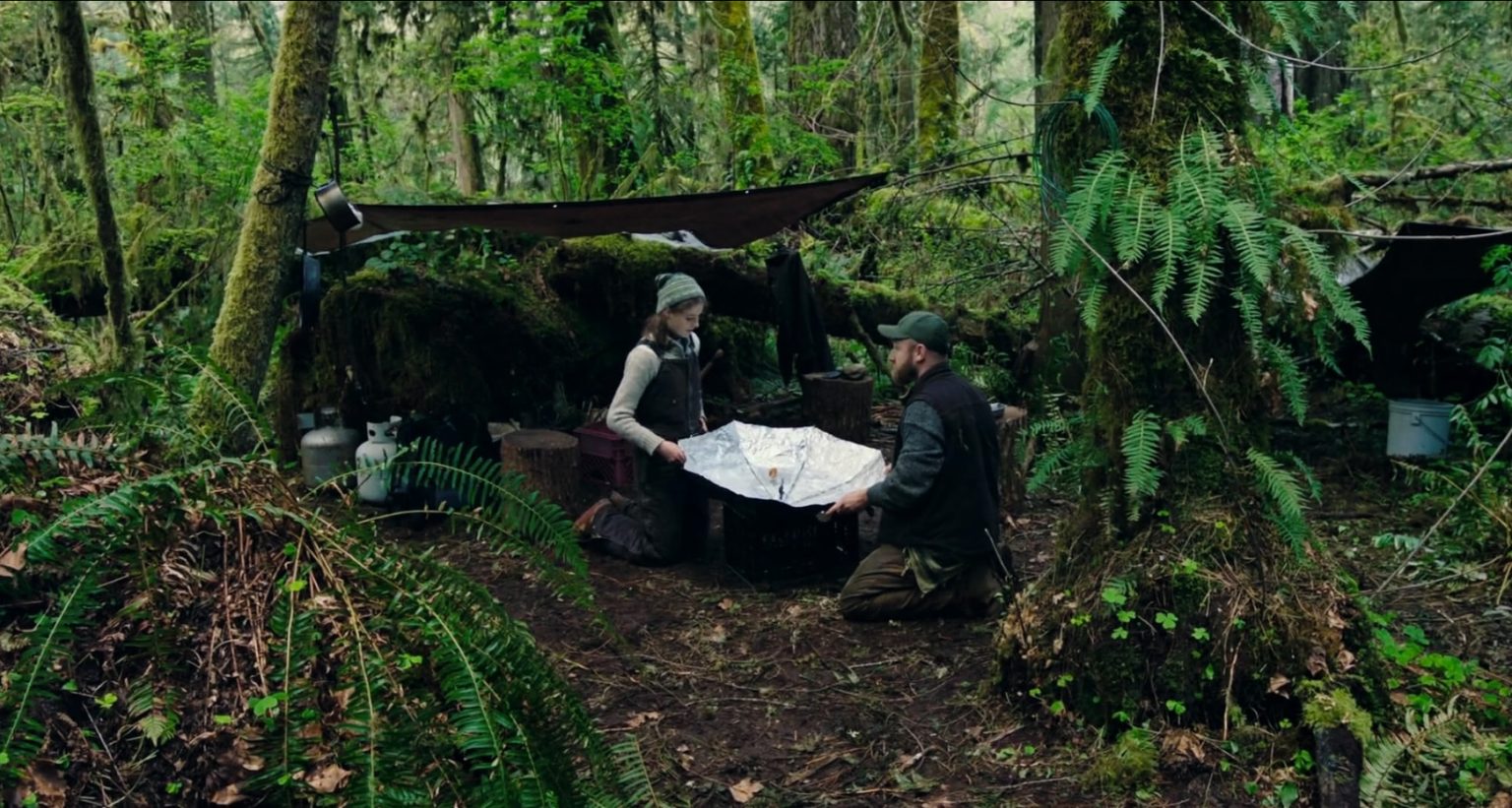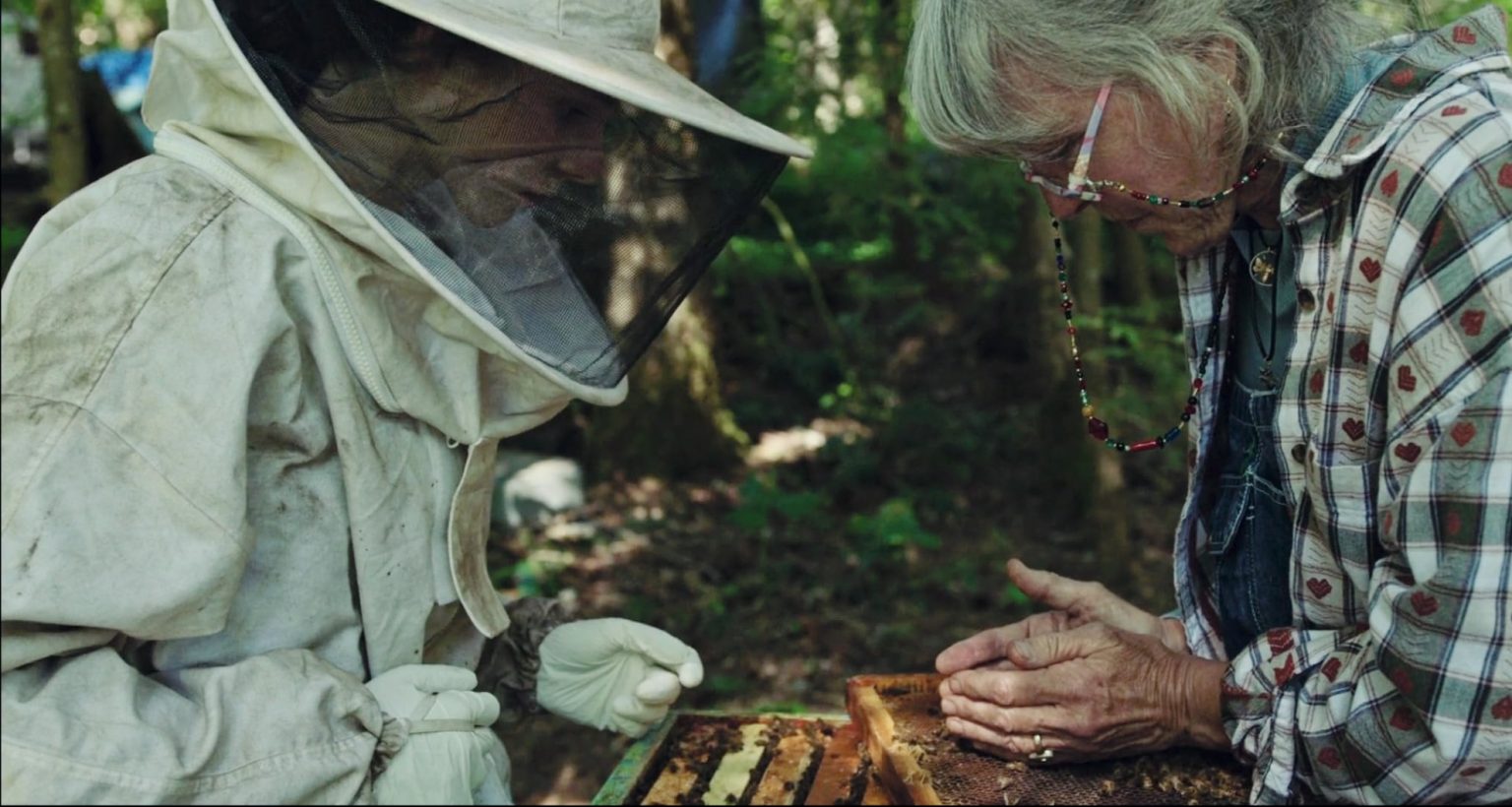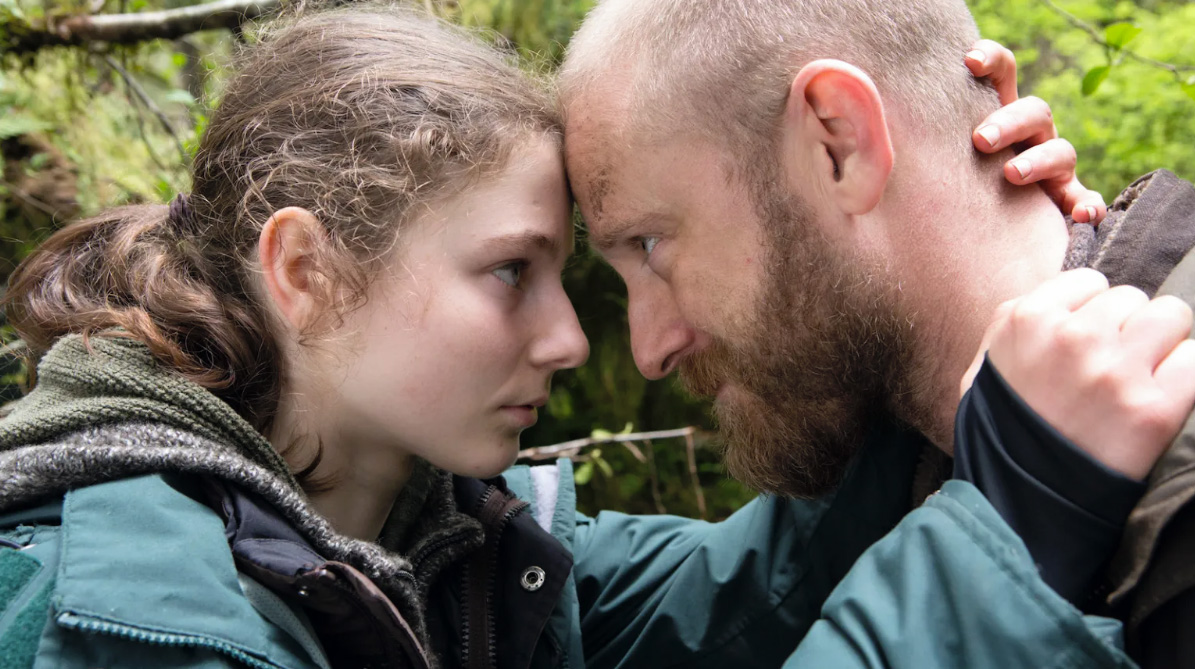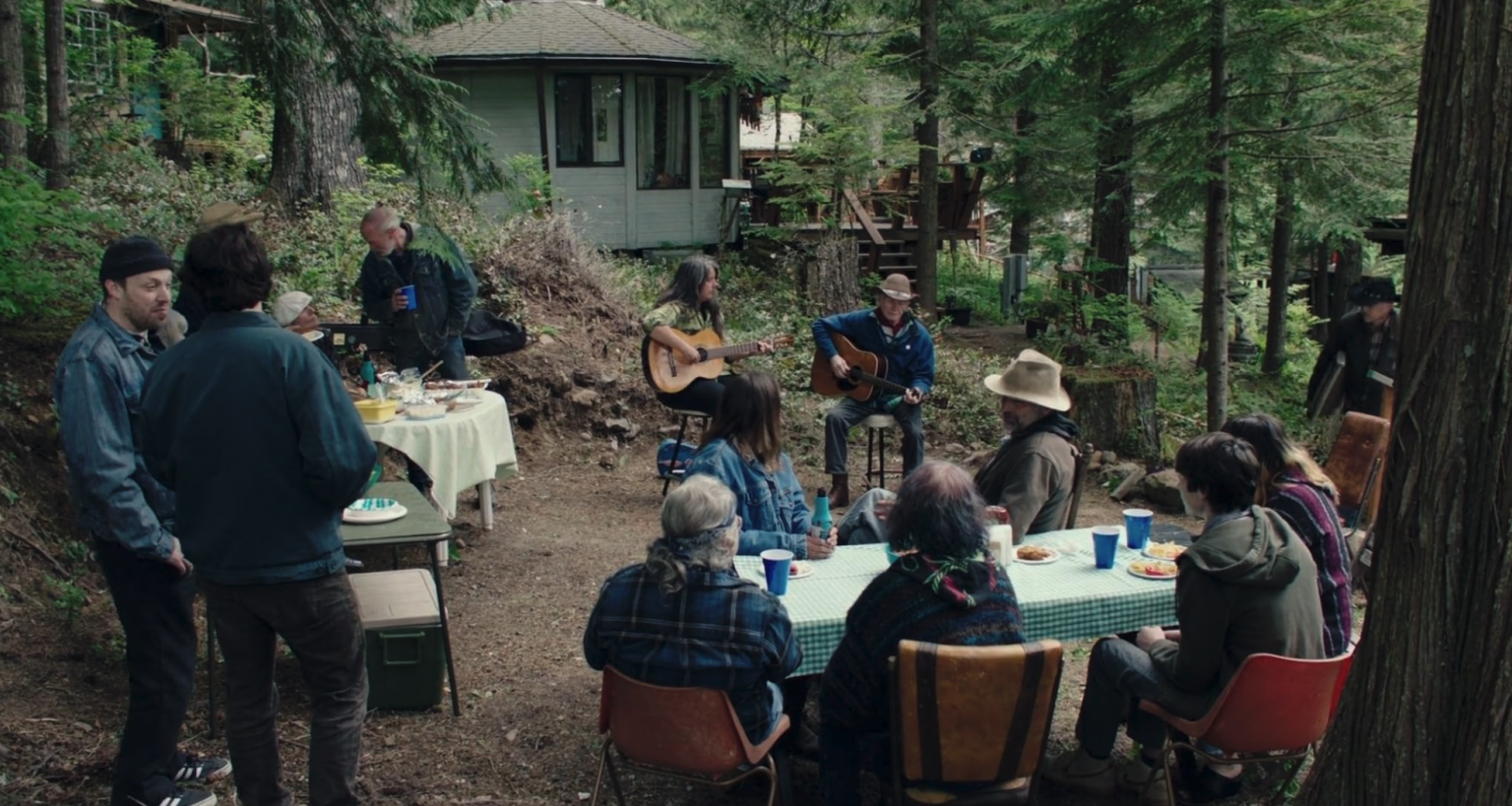Starring: Ben Foster, Thomasin McKenzie and Dale Dickey
Directed by: Debra Granik
Written by: Debra Granik and Anne Rosellini
Based on the book “My Abandonment” by Peter Rock
Rated: PG
Running Time: 1hr 49mins
WINNER – National Board of Review – Breakthrough Performance (Thomasin McKenzie)
WINNER – Los Angeles Film Critics Association Awards – Best Director (Debra Granik)NOMINEE – Critic’s Choice Awards – Best Young Actor/Actress (Thomasin McKenzie)
NOMINEE – Chicago Film Critics Association Awards – Most Promising Performer (Thomasin McKenzie)
“My goals sometimes are general — they are to make people care, to make people wonder” Director – Debra Granik – Deadline
“… there was an article in The Oregonian about a father and a daughter who had been found living in Forest Park and how they had been resettled. About a month or so later, there was a second story about how they had disappeared. As I waited for the next story, my mind, which is a fiction writer’s mind, started thinking about them-imagining how they managed to live there for four years and wondering where they went.” – Writer of Book “The Abandonment” – Peter Rock – Bleeker Street
Filmmaker Debra Granik’s film LEAVE NO TRACE was one of the best-reviewed films of 2018. As I write this, the movie holds a rare 100% fresh rating on the popular movie review website Rotten Tomatoes (based on 251 critic reviews). Additionally, it also has an impressive 88% rating on the equally popular site Metacritic (based on 44 critic reviews), where critics from publications such as RogerEbert.com, The San Francisco Chronicle, The New York Times, The Guardian, Wall Street Journal and Village Voice all gave the film a perfect score of 100%. Yet, I still know of very few people who have seen it.
LEAVE NO TRACE is a small yet powerful film that effectively deals with themes of mental illness, trust, human interaction and family. Unlike many movies, the plot itself takes a backseat to the exploration of the characters’ inner psyches, creating a genuinely engaging and relatable moviegoing experience. Ultimately, it’s a story about two people trying to find their different places in the world without losing each other. In my opinion, this is the kind of movie that people should rush to see.
The film is based on the novel “My Abandonment” by Peter Rock, which draws inspiration from a couple of articles in “The Oregonian.” The story revolves around a father, Will, and his daughter, Tom, who lead an isolated life within the comfort of a large park in Oregon. Will, a former soldier suffering from PTSD, doesn’t feel comfortable in the outside world and prefers to live in solitude with his daughter, a young teenager who has never known any other way of life and seems content with their situation. Will provides Tom with a good education and cares for her in the best way he knows how until their peaceful existence is disrupted by the authorities who discover them. They are then relocated to a Christmas Tree farm where Will works to pay for their room and board. Having a hard time adapting to the new way of life, Will feels both paranoid and uncomfortable around these new strangers, while Tom begins to enjoy the new experiences, the people they get to know, and the interactions that surround them within the outside world.
Writer/Director Granik and her co-screenwriter Anne Rosellini have written an intelligent script where the plot is nearly nonexistent. The film’s main focus lies on the characters and the inner struggles they experience. The audience journeys through the film as a silent observer, watching the characters as they find themselves on very different paths of self-discovery. Will’s story is tragic, Tom’s is inspiring and they both complement each other in a way that will have the viewer emotionally engaged throughout.
The film is effective because the filmmakers treat the audience as intelligent, allowing them to actively participate in the discovery of the themes and emotions being presented. Granik, as a filmmaker, never judges the characters for who they are and the choices that they make. The audience is never manipulated into feeling a certain way about what they are watching and the best thing about the script is that LEAVE NO TRACE is a movie with very little exposition to tell viewers what’s going on. The classic “Show, don’t tell” approach that screenwriters are taught in film school is used to perfection here. Nobody ever sums up the movie’s themes using expositional dialogue. Nobody ever comes out and gives a speech about why Will is like he is and the script never delivers any interruptive flashbacks to ensure the audience gets it. Additionally, Tom never comes out and tells her Dad what she thinks about her experiences. The audience can interpret all of this by watching how the actors are utilized. The details are in the small, understated moments. From Tom taking a TV in the farmhouse room and placing it in a closet to show his discomfort with inviting the outside world into his space to Tom wanting to keep a necklace she finds on the ground in the woods, illustrating her need to own a piece of the outside world. The film doesn’t spoon-feed the audience any answers and the viewer is allowed to sit back and come to their own conclusions about how they feel about the characters and who they really are. Watching how they act towards themselves and others… Watching their facial reactions and body language… This all makes the film feel more genuine while involving the audience more directly in the journey that Will and Tom are on.
The script also avoids the cliches that may have tempted other filmmakers. Instead of taking a manipulative path similar to what we have seen many times before, Granick stays true to the realistic approach to how people in the real world act. There are a number of moments where I thought I could predict where the story was headed but was pleasantly relieved when it turned out I was wrong. One example happens after Will and Tom are relocated to the farm. This is where Tom starts to experience what the real world offers for the first time. It’s not as terrifying as her father would have her believe. She meets a boy who introduces her to his way of life, and I immediately thought that this is what the story would become. Tom falling in love with the boy and then realizing she wants to stay behind as her father continues to move forward toward their original way of life. This is not what happens, though. The introduction to the characters in the farm environment only allows Tom to see what the real world can be like, causing her to question why they have been living off the grid for so long. At one point, she asks her dad, “Why are we doing this?” But he has no response. Tom doesn’t develop any real ties to anyone in the farm community because they are not there long enough to tell the cliché story I was expecting. We see Tom interacting with the others around her and enjoying the experience. She chooses to learn about the new place while her father just feels uncomfortable and trapped. Tom feels uneasy about adapting to society’s norms and is almost desperate to escape them. This ultimately causes him to feel the need to get away, taking Tom, the only other person he feels comfortable with, along. Instead of the farm and its lessons being the driving force behind Will and Tom’s story, it’s only used as a beginning to the emotional journey that Tom finds herself on, giving the viewer an outside look at how these two characters take to life outside the park very differently and how happiness if it’s ever to come, is still waiting outside of the farm community.
The central relationship between Will, played by Ben Foster, and Tom, played by Thomasin McKenzie, is extremely effective. The two actors work well together and have effectively created a loving relationship between their two characters. The film’s emotional center stems from the interactions they have relating with one another and how this changes throughout their journey. At the start of the story, Will and Tom share a dependence on each other and stand united against the world. However, as the story unfolds, Tom realizes that her father’s troubles are not hers to bear, and she must find her own path in life. Thanks to the convincing bond created by both Foster and McKenzie, the film delivers some truly moving scenes as the two characters must come to terms with the inevitable conclusion.
Foster effectively portrays Will’s inner struggles with a performance that probably should have garnered him some awards attention. He doesn’t say as much as the viewer might expect, but the way he carries himself as he interacts with others is genuinely effective. Portraying elements from paranoia to discomfort, Foster hits every beat perfectly. Meanwhile, McKenzie’s character of Tom is someone who is more curious about the world than scared, and the young actress portrays Tom with the perfect amount of confusion and fascination to move her inner growth forward as she learns about the outside world, an interesting counterbalance to Will’s distrust and discomfort. She is played with a subtle curiosity that reveals her own inner journey of self-discovery, a path that is much different than that of her fathers.
The film also features an excellent cast of supporting characters, all of whom have very limited screen time but are incredibly important to the film as a whole. Granick uses them to great effect in creating a very real world surrounding Will and Tom. They all have their own very complete stories to tell and are all instrumental in helping to shape the inner growth of the two leads.
LEAVE NO TRACE is a simple story, but its simplicity is what makes it so effective. With very little plot, the story thrives because of its rich characters and their emotional arcs. The filmmakers avoid the manipulations and cliches that other films can have a tendency to rely on, and it’s a must-see for those who want a truly emotional moviegoing experience.
Watch LEAVE NO TRACE
You May Also Like

